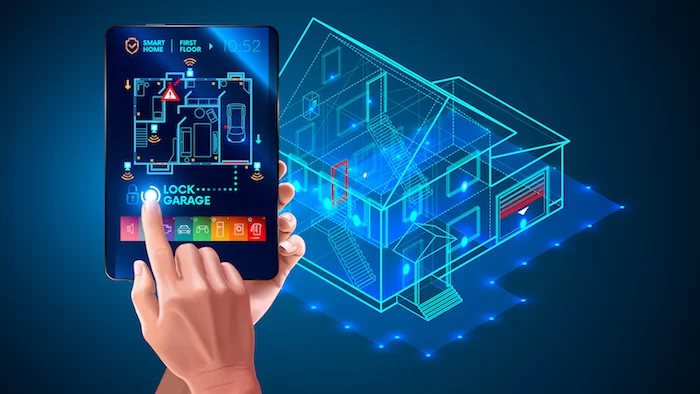
IoT is changing the landscape of devices in the global industry and consumers. In the past few years, everything is about smart technology. We have just scratched the surface of the technology. More and more businesses and private homes benefit from smart technology.
Let’s take a look at some examples where the Internet of Things will make great strides in 2020. IoT and smart devices showed boost of productivity by 40% in major US-based factories. And we are only going up from here.
We are now slowly moving past the era of smartphones and laptops. The new wave of IoT is about connected cars, connected wearables, smart cities, connected healthcare, and smart homes. Simply put, the goal is to get to a connected life. According to reports, by the end of 2020, connected devices across all technologies should reach 20.6 billion.
Just for comparison, in 1990, the number of connected devices was 0.3 million. By 1999, that number rose to 90 million. And in 2010, the Internet of Things reached 5 billion connected devices. With the path we are on, the number of connected devices by 2025 should reach 1 trillion.
So, are we moving toward a fully automated world? These connected devices will bridge the gap between physical and digital world. Their goal is to improve the quality and productivity of life, society, and industries. At the moment, Smart Homes is the most awaited feature. The competition in smart appliances is enormous.
Reports and analysis confirm that more than 35% of connected devices fall into the smart appliances category. Next is the smart energy meters with more than 25%, followed by 13% of wearables and 10% of connected cars.
We have yet to put more focus on connected healthcare and smart healthcare devices. Here is a breakdown of each category and how we can improve.
Smart Home is the most searched IoT associated feature on Google. What is Smart Home? Well, you probably experienced it by now. One of the most common Smart Home appliances is the air conditioning. Most new and modern AC have Wi-Fi connection. This allows you to turn it on/off before coming home. Other common examples include unlocking doors to friends for temporary access.

Smart Home products save time, energy, and money. Amazon Echo was one of the first voice assistants. Now, we have Alexa and Google products. You can control your home with your voice. Cool, right? Some 10 years ago this was available only in movies.
In the past few years, wearables explored on the global market. Companies invest more and more money in this devices. They contain sensors and software that can collect data and information about the user. Then, the data is processed and you can extract essential insights.
Usually, these devices cover fitness, health, and entertainment industries.
Tesla is one of the first companies to fully explore the connected cars market. We had Bluetooth, Wi-Fi calling, GPS navigation and more even before Tesla. But the company took things to another level. Some investors believe Tesla will reach 1 trillion in revenue in 10 years. That is astonishing.
Connected cars are equipped with Internet Access and can share access with others. In the beginning, the automotive digital technology focused on optimizing vehicles internal function. Now, they shifted their attention to the in-car experience.
Connected cars can optimize their own operation, maintenance, and comfort of passengers. AT&T was the first telecom company to open a connected car research and innovation center.
This is the new buzz in the industrial sector. The goal is to empower industrial engineering with sensors, software, and big data analytics. And the end result would be brilliant machines.
Industrial internet is desirable and investable asset. Smart machines are more accurate and consistent than humans. No, machines and robots will not take over. But the industry will grow.
Governments now help farmers use advanced technologies and techniques to increase food production. Smart farming is one of the fastest-growing fields in Internet of Things.
Farmers can use insights and data to yield better return on investment. This includes sensing for soil moisture and nutrients, but also control of water usage.
We already see this trend. Internet of Things is transforming entire cities. And it solves real problems the citizens face on a daily basis. With great connection and data, IoT can solve traffic congestion issues, but also reduce pollution, crime, and noise.

Barcelona is one of the foremost smart cities in the world. They’ve used IoT to enhance smart parking and environment.
This is a sector we haven’t fully utilized yet. Connected healthcare remains the sleeping giant of the IoT applications. There is an enormous potential for companies. And after the Covid-19 crisis, we can expect much more investment in connected healthcare.
Data will help with personalized analysis of health and provide strategies to combat illness. You can see it even now. Some countries like Singapore, used apps to track patients and potential infected patients with Covid-19 virus.

This documentary accompanies the complex tuning process of a Mercedes G and Mercedes S class. In the Brabus main plant in Bottrop Germany, all Daimler vehicles have been spruced up...
Aluminum is a lightweight, silvery-white metal that is abundant in the Earth's crust. It is a highly versatile material that has a wide range of uses in various industries, such as...
Bosch in Reutlingen, Germany: The highly sensitive sensors and microchips that are produced here are installed in automobiles and consumer electronics all over the world.A tremendo...
Will the cities of the future be climate neutral? Might they also be able to actively filter carbon dioxide out of the air?Futurologist Vincente Guallarte thinks so. In fact, he sa...